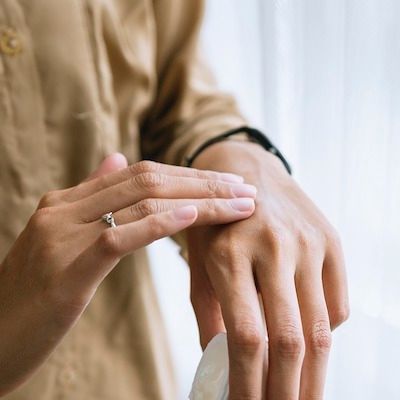News
Article
Bimekizumab Effective Among Patients with Nail, Genital, Scalp Psoriasis
Author(s):
These data on the efficacy of bimekizumab suggest positive therapeutic effects on nail, scalp, and genital lesions as well as quality of life.
Credit: Pixabay

Bimekizumab is efficacious as a treatment for nail, genital, and scalp lesions among those with psoriasis, according to recent findings, with lesions that were difficult-to-treat and general quality of life improving with treatment as well.1
These data were drawn from a retrospective analysis conducted to evaluate the impact of bimekizumab—an interleukin (IL)-17A and IL-17F inhibitor—as a treatment for psoriasis. They specifically looked at its effect over 24 weeks on treating nail, genital, and scalp lesions.
This research was led by Teppei Hagino from the department of dermatology at Nippon Medical School Chiba Hokusoh Hospital in Japan. Hagino et al. noted the existence of previous research highlighting bimekizumab’s efficacy in general for the skin disorder.2
“However, studies on the effectiveness of bimekizumab for genital, nail, and scalp psoriasis are limited,” Hagino and colleagues wrote. “In fact, there are no such real-world studies in Japan. The objective of this study, therefore, was to assess the therapeutic effects of bimekizumab on genital, nail, and scalp psoriasis through 24 weeks of treatment.”1
Study Design
The investigators’ retrospective research involved the enrollment of 52 Japanese patients in the age range of 15 years or older. These individuals had been given a diagnosis of moderate to severe psoriasis between May 2022 - February 2024, with 21 having psoriatic arthritis (PsA), 29 having plaque psoriasis, and 2 having erythrodermic psoriasis.
The data implemented in this study were collected retrospectively using medical records, with data on participants’ medical history and demographics being collected by the team before treatment. Some examples of this data included sex, disease duration, body mass index, age, biologics or apremilast utilization, smoking status, existence of diabetes, and baseline measures including static Physician's Global Assessment (sPGA), Psoriasis Area and Severity Index (PASI), and the Dermatology Life Quality Index (DLQI).
Administration with bimekizumab was provided by the investigators at a dose of 320 mg to subjects every 4 weeks up to the 16-week mark. Following this period, the research team adjusted the dosing, determining that 31 would continue on the 320 mg dose every 4 weeks. The rest of the 21 subjects swapped to a 320 mg dose scheduled over the course of every 8 weeks.
Psoriasis severity which impacted specific areas—genital, fingernail, or scalp—was assessed by the research team through the use of the genital-PGA, PGA of fingernails (PGA-F), or scalp-specific PGA (ss-PGA) at the 0, 4, 16, and 24-week points of bimekizumab therapy. They based these analyses on a 5-point scale ranging from 0 (clear) to 4 (severe), indicating the overall severity of the psoriatic lesions.
Additionally, the investigators looked into the proportion of participants reaching sPGA 0/1 or DLQI 0/1 at these same points in time among individuals who began reporting an sPGA or DLQI score of 2 or more.
The documentation of treatment-emergent adverse events (TEAEs) occurred among subjects, specifically in the treatment period and up to 30 days following the final dose. The research team defined TEAE as any adverse event that started or worsened after the beginning of the treatment.
Findings
The investigators found that the 52 subjects had a median age of 58.5 years (IQR 42.8–69.3), with 69.2% of them having been male. The median duration of participants’ disease was noted by the research team as being 10.0 years (IQR 4.0–21.8), with the team concluding that 65.4% reporting nail involvement, 63.5% of subjects reporting genital involvement, and 84.6% reporting scalp involvement.
Significant disease improvement was seen in participants’ lesions in these 3 bodily regions, with the investigators reporting that rates of achieving near-clear or clear skin (PGA 0/1) in these areas by the 24-week mark were 66.7% for PGA-F, 96.2% for genital-PGA, and 93.9% for ss-PGA.
They also found that rates of achievement of overall improvement of one’s skin (sPGA 0/1) and life quality (DLQI 0/1) were shown to be 93.9% and 83.3%, respectively. Overall, the subjects’ psoriasis improvements in the 3 aforementioned regions largely paralleled the changes observed in other bodily regions during bimekizumab therapy.
The research team noted that these data further suggest that both IL-17A and IL-17F may have a role in psoriasis development in these areas, as well as across the entire body.
“This study had several limitations,” they added. “First, this study was conducted at a single center, resulting in a small sample size. Second, the study duration of 24 weeks was short…Third, this study was a retrospective one. The absence of a control group may impede the generalization of our findings.”
References
- Hagino T, Onda M, Saeki H, Fujimoto E, Kanda N. Effectiveness of bimekizumab for genital, nail, and scalp lesions with psoriasis: A 24-week real-world study. J Dermatol. 2024 Aug 12. doi: 10.1111/1346-8138.17427. Epub ahead of print. PMID: 39133570.
- Hagino T, Saeki H, Fujimoto E, Kanda N. Real-world effectiveness and safety of bimekizumab in Japanese patients with psoriasis: a single-center retrospective study. J Dermatol. 2024; 51: 649–658.





